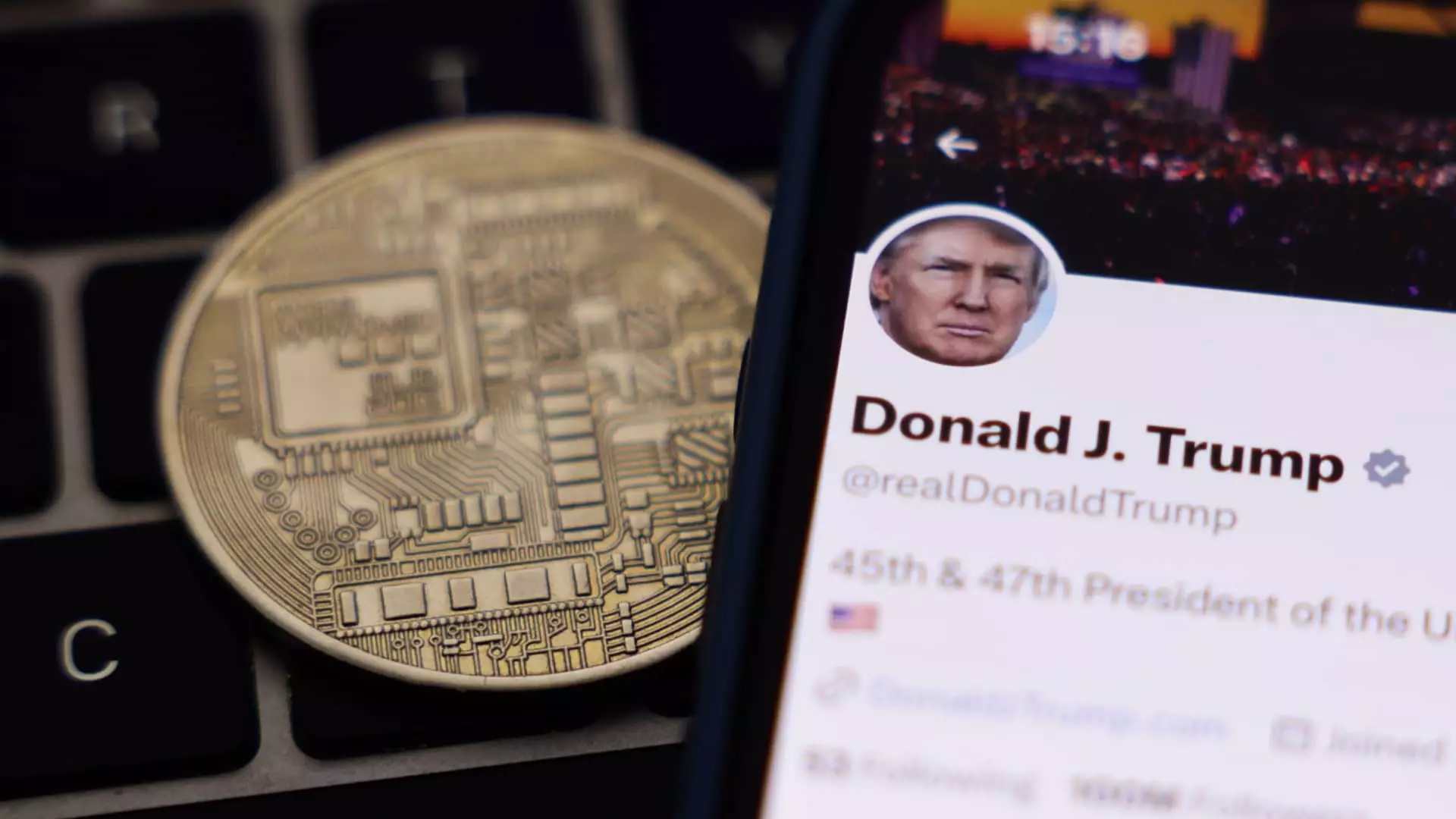The cryptocurrency market is notoriously volatile, and recent events have only heightened this characteristic, particularly for meme coins. Over the weekend, a dramatic shift occurred as President Donald Trump implemented long-anticipated tariffs on imports from Mexico, Canada, and China. This trade war announcement sent ripples through global markets and saw investors quickly divesting from riskier assets, including popular meme coins. Analyzing these developments reveals not only the fragility of meme coin investments but also the larger implications for the cryptocurrency landscape amidst geopolitical tensions.
In the wake of Trump’s tariff announcement, the meme coin market, often characterized by its speculative trading patterns, witnessed substantial declines. Notably, the “Official Trump” meme coin, launched just weeks prior, faced a staggering 15% drop, falling to approximately $17 after reaching a high of $73 shortly after its launch. Such volatility is indicative of the precarious nature of meme coins, which thrive on hype and momentary market sentiment rather than fundamental value. Other prominent meme coins like Dogecoin and Shiba Inu also experienced losses of around 14%, reinforcing the notion that these assets are highly susceptible to external economic factors.
James Davies, co-founder of Crypto Valley Exchange, emphasized that cryptocurrencies like Dogecoin had given back much of their earlier gains due to rising tariffs. The shift in sentiment can be attributed to the broader implications of trade restrictions, which challenge the foundational principles of cryptocurrency that prioritize free trade and democratic financial transactions. As geopolitical tensions grow, the investor community becomes increasingly risk-averse, leading to significant sell-offs in speculative markets, particularly those populated by meme coins.
Meme coins initially thrived post-U.S. presidential election, driven by a wave of enthusiasm and perceived opportunities for rapid financial growth. However, the recent plunge exemplifies the fragility of such assets, raising concerns about the sustainability of this crypto craze. The initial excitement surrounding meme coins may not withstand the pressures of economic uncertainty and political maneuvering, suggesting that many of these projects could be misallocated investments that distract resources from more valuable endeavors within the cryptocurrency space.
Despite the turmoil among meme coins, Bitcoin’s losses were comparatively modest at around 3%. This differential highlights Bitcoin’s status as a relatively more stable asset in the cryptocurrency realm. Nonetheless, the potential for further declines remains as long as the trade war escalates. Investors are closely monitoring economic developments and adjusting their portfolios in response to ongoing market volatility, particularly as the broader financial landscape continues to be affected by global trade relations.
The intersection of political decisions and financial markets demonstrates the inherent risks associated with meme coins and the cryptocurrency sector at large. As the trade war unfolds and investors recalibrate their strategies in the face of heightened uncertainty, the future of meme coins may very well hinge on their ability to adapt to changing market sentiment. Investors should remain vigilant and exercise caution, as the allure of quick gains may quickly turn into significant losses in this unpredictable market.

